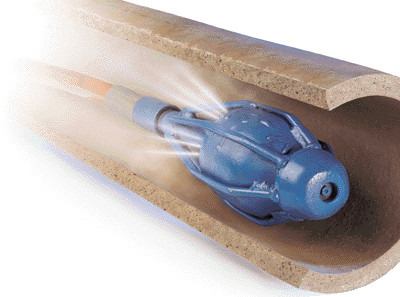

Procedure for Cleaning with Swab
In distribution systems where hydrants are connected vertically above a main without a duck- foot bend, the insertion of swab and expulsion from the pipe are carried out at the hydrants. In situations, hydrants are laterally connected to the main insertion of the swab has to be either through an existing valve in the line or by pumping water under pressure through the hydrant. The exit can be through another hydrant or a tee connected to the other end of the pipe and kept open.
For small diameter pipeline one length of pipe is removed temporarily and the swab is inserted into the pipeline . The pipeline section to be cleaned is isolated by valves. The swab is dipped in bleaching powder solution of strength, 50 mg/1 of chlorine and inserted into the pipeline.
Water is allowed into the pipeline by opening the valve on the upstream side or allowing from a mobile water source. This ensures water flows in one reach only between the point of insertion and point of exit of the swab. The movement of swab depends on the velocity of flow in the pipe, which usually should be not less’than 30 cm/sec. The softer swabs can pass through butterfly valves also. Any partial obstruction in the pipeline will tear off the swab and will not be blocked. The blocked or stuck swab inside the pipeline, if any, can be released by allowing the flow inside the pipeline in the opposite direction.
Following the exit of the swab from the pipeline, water should be allowed to flow through exit for flushing out loosened materials. Swabbing may have to be resorted to each section of the pipeline so as to ensure complete removal of deposits. At a stretch 100 to 300 m length of pipeline can be swabbed. All the newly laid pipelines should be swabbed to remove all dirt and loose deposits before put into operation.
Leave a Reply







 LIKE TO GET UPDATES
LIKE TO GET UPDATES  TO GET EXPERT GUIDE
TO GET EXPERT GUIDE